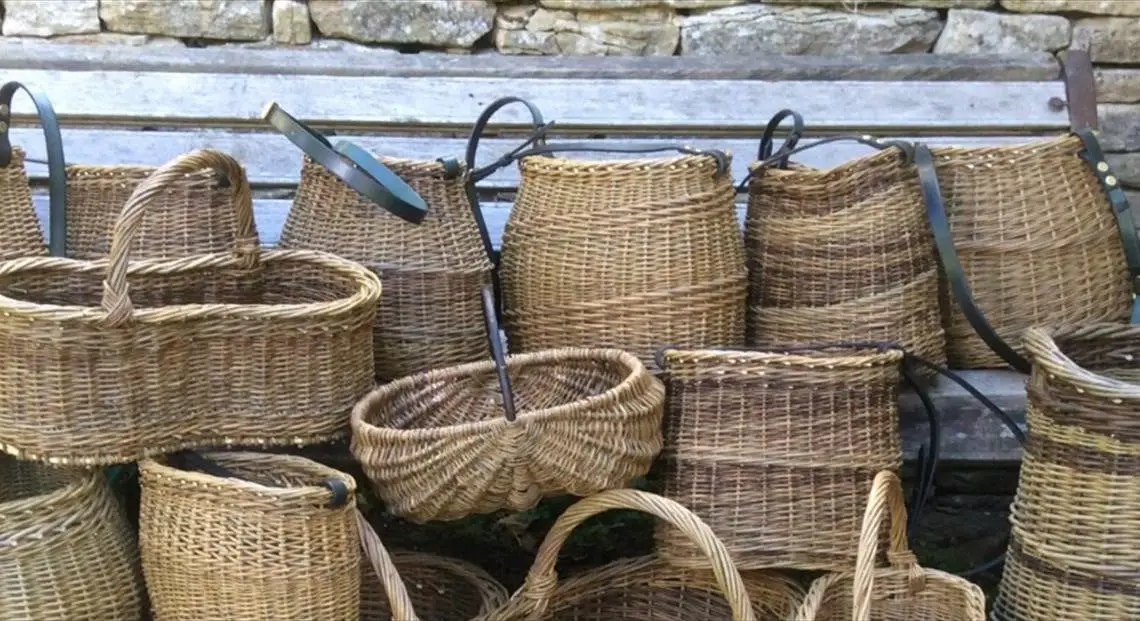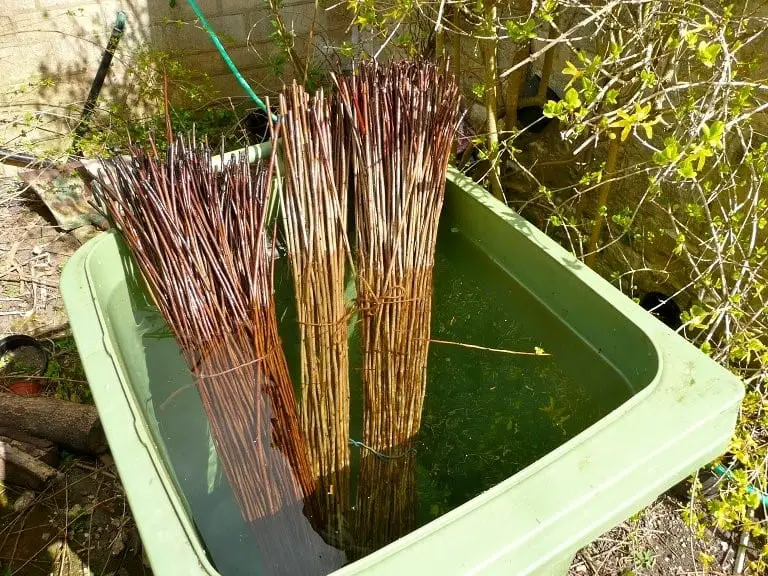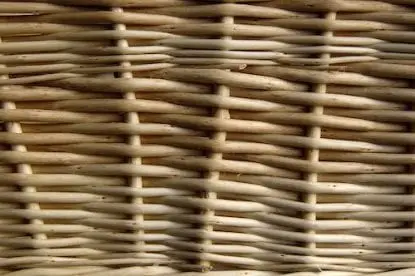
There is the same technique on how to weave a basket, whether you use willow or a cane. The difference may exist, but it’s too little.
Osiers or young willow shoots can be bought in bundles or bolts, which can be found with different characteristics. They may be thicker, thin, boiled, dried, steeped in water, split, and without a bark. So they’re in different weights which comprise light and heavy work on weaving baskets.
There’s a variation of colors too. There’s a line of natural colors like gleaming white, golden tan, and dark brown. You may stick with county-looking color or use the shades the paint can offer.
Tools and Materials for Basket Weaving
Only a few basic tools are needed in weaving a basket. You should see to it that you have a sharp knife and good, tough scissors that can point and cut the osiers. You may also get side cutters for getting rid of the ends. You may need to kink the stakes before bending them, so you have to get round-nosed pliers. It is done when sharp angles are present.
A bodkin can help you with making a space between woven parts and putting the rod in the right position after finalizing the gap. It is a pointed metal tool with a wooden handle. You can replace it with a strong knitting needle.
Things that you may find helpful in weaving a basket are clothespins, measuring tape, and protective waterproof cloth. Clothespins can be used to hold your work when you need to take a break. If you want to level up into advanced weaving craft, you need a rapping iron to help you push the weaving rows. You can also use it to hold your basket to remain at a good angle for you to get the work done.
When you’re done collecting the necessary tools, you can check out the materials in stores. You can substitute willow for a cane, and it will only have a little difference. Osiers from willow are thicker and heavier than cane. But you can get a lighter willow if you want to create small baskets.
If you’re making a pet basket, it won’t make sense if you use a flimsy cane. The basket that you want needs firmness for the whole form due to its purpose. You better choose a heavier material. But if you’re making a table basket for decoration, using a lighter willow or cane is fine. You can buy synthetic cane for small stuff. It will spare you of the soaking process and work on keeping the material damp, just like what you need to do with willow and cane.
There are two basic weights when you work your way on weaving the basket. A thick and heavy osier stands for the stake, which will constitute the skeleton or the structure of your basket. It’s also required for the bottom part while the sides will just be fine with slightly lighter osier or the weaving rods.
The strands that stand upright are called spoke. It is the part supporting the basket’s sides. They need to be strong, and they’re stiffer than weavers.
If the rods are marked with numbers, the weaving rod or the weaver should be smaller than the stakes in two sizes. It’s important the rods for stakes, and the bottom part are thick and strong.

Stakes and weavers should be soaked before weaving. It is important, so they will go with your hands without snapping and breaking. Half an hour is enough soaking time for your materials, then take them out of the water with a damp cloth. Let them stay in the cloth for a short time.
The ones you will use as stakes should be kept straight while soaking. It is allowed to soak weavers with the length of 3 yards in coils. You may find that your rods became too dry. So have a sponge or damp cloth beside you when weaving.
An unfinished basket may also need soaking. It’s a necessary step when there’s an additional basket base and extra stakes that were inserted. It should be done so the side will be on the right angles for the skeleton structure of the basket.
See to it that the stakes are damp and malleable so it won’t break when bent, and it can be kinked up with pliers. An extra dampening is needed for bending down the stakes’ ends to create a final border of your masterpiece.
The base of the Woven Basket
The base of the woven basket is based on its shape, which may be round, squared, or oval. Another consideration is inclined to the purpose of the basket. It may be for decoration, so the base can be open. If it sets for other uses, it should be sturdy.
The thickness of the rod should also be classified for simple and intricate patterns. But if you check the practice of the weavers, it’s just the stakes being fixed in a cross formation and other forms. The insertion of a single set is done into the part that has been split for a few inches. To keep it in the right place, the cross can be woven and bound.
The difference between the shape of the basket is established at this early point. When the centerpiece is fastened, the rods are laid in spokes with even space in between. You may add more spokes if space expands too much.
Patterns on How to Weave a Basket

Randing
It is the simplest form of weaving a basket. A stake is under another, and the other is over the next. Then the same pattern goes on and on. If you go around continuously, the pattern is visible with odd numbers of stakes. The second row is the opposite of the first one.
It’s still possible to do randing in two sets of even stakes. You have to weave with two sets of weaving rods. When you’re done with the first round, work around the starting point on the space that goes to the left. The weavers should be alternately woven to attain the right pattern, which is suitable for large areas.
Pairing
It’s a pattern that shows a twisting rod on the spoke.
Wailing
It can be seen on the top close to the border. It’s a strong weaving method that follows the intervals to form the basket’s shape. It is also woven after making the base. It is the part that helps the stakes to stand upright, and this process is called ‘upsetting.’ Three rods are required.
It is the part that catches one’s attention easily. It is done to tidy up and secure the stakes and the borders. When the weaving is finished, you can bend the rods and tuck them in. But you can encounter complex borders that are braided. It might need some time to learn, but it’s rewarding.
Summing It Up
If you want to learn how to weave a basket, you have to ensure that you have the right tools and materials to get started with the project. You must learn the patterns on weaving and make sure you securely put the materials.
